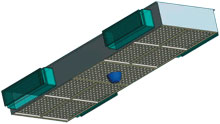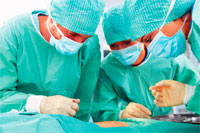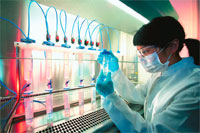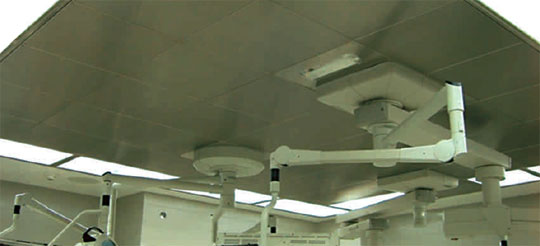 Clean rooms are closed environments where particle and microorganism number, temperature, humidity rate, fresh air amount, ambient air pressure, air flows and similar parameters are kept under control. Operating rooms, intensive care units, sterilization and IVF units, genetic laboratories etc at hospitals are classified as clean rooms.
Clean rooms are closed environments where particle and microorganism number, temperature, humidity rate, fresh air amount, ambient air pressure, air flows and similar parameters are kept under control. Operating rooms, intensive care units, sterilization and IVF units, genetic laboratories etc at hospitals are classified as clean rooms.
 If we list the sectors in which Laminar Flow Units are used, especially operating rooms, pharmaceutical industry, chemistry industry, food production, electronics industry and research laboratories come to the forefront.
If we list the sectors in which Laminar Flow Units are used, especially operating rooms, pharmaceutical industry, chemistry industry, food production, electronics industry and research laboratories come to the forefront.
At clean rooms with laminar flow, the air flows in the form of a line. At each point of these flow lines, which are parallel to each other, the speed of air is fixed (table 0.22 m/sec-0.28 m/sec). And in turbulent flow, the air flow is irregular and the flow lines are random (0.35 m/sec-0.55 m/sec).

At a test performed under same contamination rate at areas with laminar and turbulent flow, it has been observed that the number of microorganism that stick to a food container under laminar flow was zero and that it was 200 under turbulent flow. As per this result, laminar flow shall be provided for hygienic applications.
 The air to be provided inside the operating rooms shall pass through hygienic air-conditioning systems, and it shall conform ‘B2’ and ‘C’ filtering in accordance with DIN 24185. The air that is prepared in this manner is filtered by high performance filters at laminar flow ceiling housing. The air passes through these systems and provided to operating room. The difference shall be 1-3C as the entrance temperature of air will be lower than the average temperature of operating room.
The air to be provided inside the operating rooms shall pass through hygienic air-conditioning systems, and it shall conform ‘B2’ and ‘C’ filtering in accordance with DIN 24185. The air that is prepared in this manner is filtered by high performance filters at laminar flow ceiling housing. The air passes through these systems and provided to operating room. The difference shall be 1-3C as the entrance temperature of air will be lower than the average temperature of operating room.
If we examine the significance of laminar flow units; the air quality not being within the hygiene limits during operation would increase the risk of patient being infected during operation. Laminar flow units have been produced in order to overcome this problem. These units compose a laminar flow on the patient and doctors in the area of operation and enable protection against bacteria, virus and microbes.
Laminar flow ceiling air distributers are positioned right over the operating table. And as it creates aerodynamically controlled sterile air flow by pulling the air under the laminar flow distribution plenum, in other words by replacing it, it does not require an internal cabinet. System is also being preferred due to its low initial investment cost. The microbes and particles, that are being pulled down by vertical air flow, are discharged from the flooring and/or ceiling vents. Positive air pressure created within the operating room prevents the penetration of contaminated air from the surrounding sections and from outside.
In the implementation, we see that the most significant effect preventing the laminar flow is the lamp of operating room. Free convection flow created by the heat provided with the lamp tries to disturb the laminar flow.
Thus the size and location of the lamp presents great importance. The most convenient condition is to have a lamp with as many spotlights as possible and with small diameter, and to place it behind the operation staff.
As the laminar flow blowing system operates, the permeability of the filter decreases and difference of pressure increases. Permeability is determined by differential manometer.
Thus two pipes have been assembled at the inlet and outlet of the housing. Filter shall be changed when the pressure difference is two times the nominal value.

Recircular System
The difference of recircular system from the system with 100% fresh air is the receipt of a part of the air from the environment and re-provision of it to the environment after filtering. Thus the mixture of fresh air and ambient air is obtained. In order to realize this operation, it is provided that the radial fans support the system before the entry of laminar flow. The speed of radial fans can be adjusted and low noise level has been preferred.
As a part of the air being sucked from the environment will be sent to the environment again while a part of it will be discharged, fiber holder vents are placed at the first point of suction channel in order to filter the coarse particles.